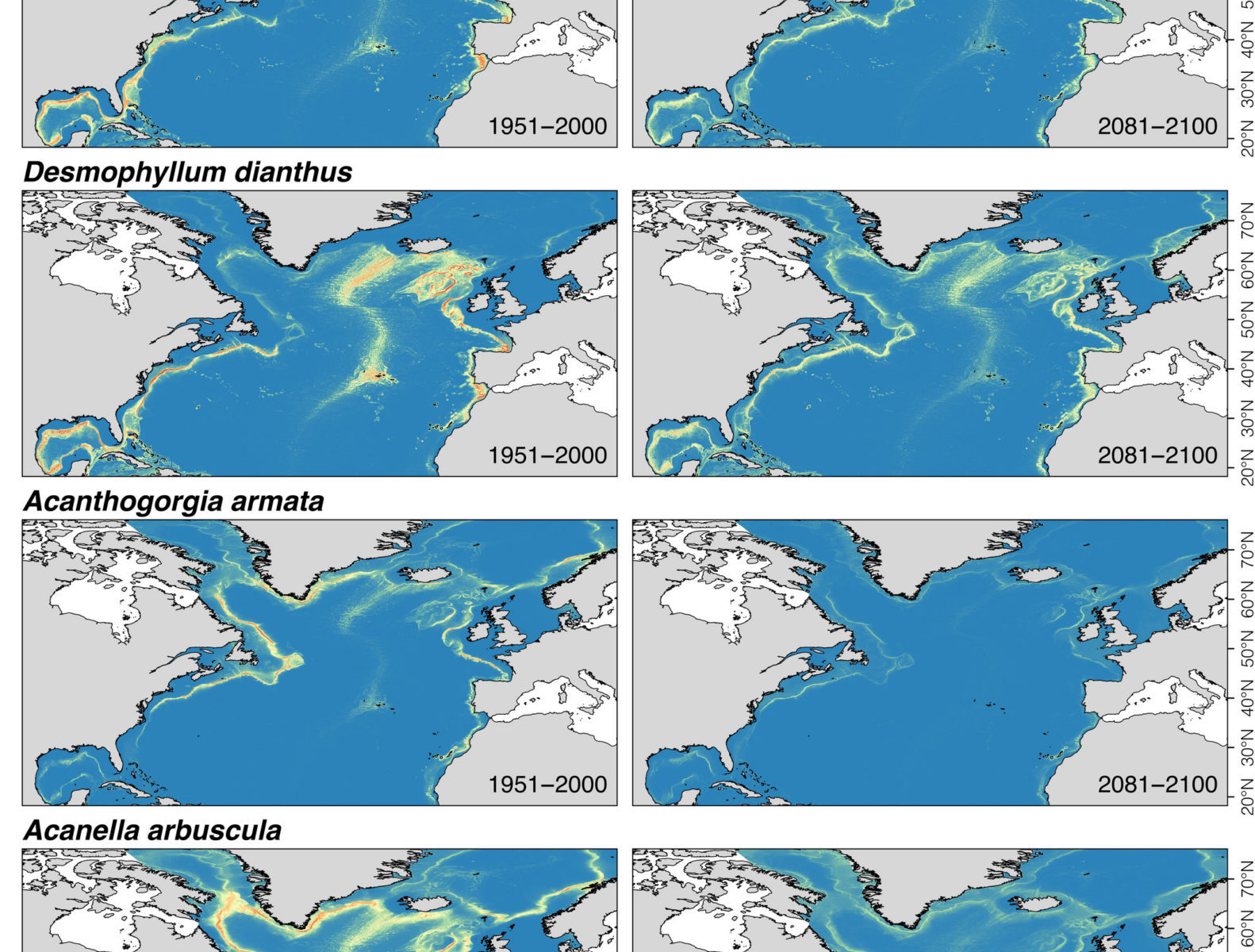Climate‐induced changes in the suitable habitat of cold‐water corals and commercially important deep‐sea fishes in the North Atlantic
Morato T, González‐Irusta, JM, Dominguez‐Carrió C, Wei C-L, Davies AJ and others
https://onlinelibrary.wiley.com/doi/full/10.1111/gcb.14996
The deep sea plays a critical role in global climate regulation through uptake and storage of heat and carbon dioxide. However, this regulating service causes warming, acidification and deoxygenation of deep waters, leading to decreased food availability at the seafloor. These changes and their projections are likely to affect productivity, biodiversity and distributions of deep‐sea fauna, thereby compromising key ecosystem services. Understanding how climate change can lead to shifts in deep‐sea species distributions is critically important in developing management measures. We used environmental niche modelling along with the best available species occurrence data and environmental parameters to model habitat suitability for key cold‐water coral and commercially important deep‐sea fish species under present‐day (1951–2000) environmental conditions and to project changes under severe, high emissions future (2081–2100) climate projections (RCP8.5 scenario) for the North Atlantic Ocean. Our models projected a decrease of 28%–100% in suitable habitat for cold‐water corals and a shift in suitable habitat for deep‐sea fishes of 2.0°–9.9° towards higher latitudes. The largest reductions in suitable habitat were projected for the scleractinian coral Lophelia pertusa and the octocoral Paragorgia arborea, with declines of at least 79% and 99% respectively. We projected the expansion of suitable habitat by 2100 only for the fishes Helicolenus dactylopterus and Sebastes mentella (20%–30%), mostly through northern latitudinal range expansion. Our results projected limited climate refugia locations in the North Atlantic by 2100 for scleractinian corals (30%–42% of present‐day suitable habitat), even smaller refugia locations for the octocorals Acanella arbuscula and Acanthogorgia armata (6%–14%), and almost no refugia for P. arborea. Our results emphasize the need to understand how anticipated climate change will affect the distribution of deep‐sea species including commercially important fishes and foundation species, and highlight the importance of identifying and preserving climate refugia for a range of area‐based planning and management tools.


